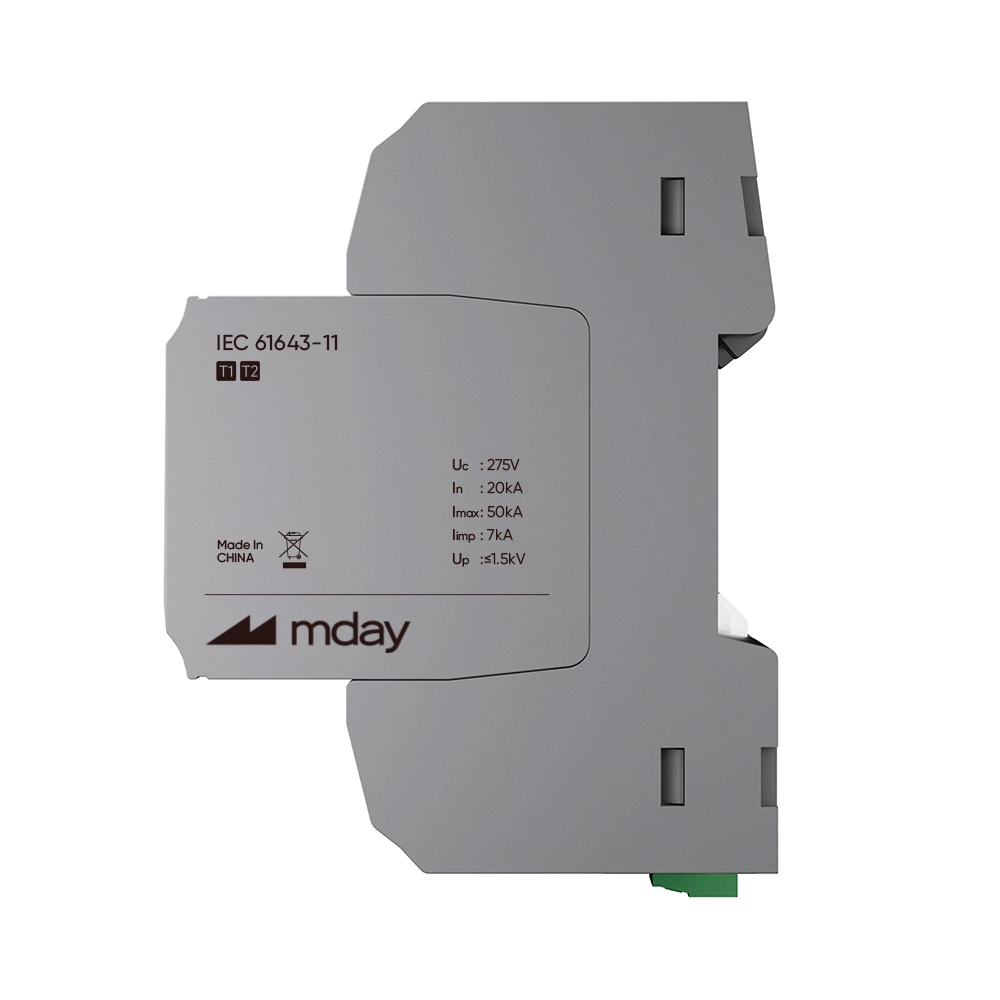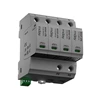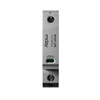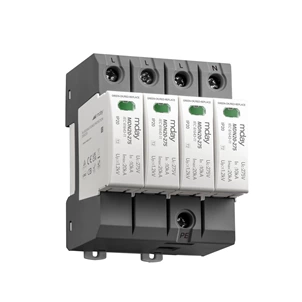Surge Protector Classification Protection
Surge Protector Classification Protection
The first-level lightning arrester can discharge the direct lightning current, or discharge the huge energy transmitted when the power transmission line is directly struck by lightning. For places where direct lightning strikes may occur, CLASS-I lightning protection must be carried out. The second-level lightning arrester is a protective device for the residual voltage of the previous lightning arrester and the induced lightning strike in the area. When a large lightning energy is absorbed by the previous level, a part of the energy that is quite huge for the equipment or the third-level lightning arrester will still be transmitted, and the second-level lightning arrester needs to further absorb it. At the same time, the transmission line passing through the first-level lightning arrester will also induce the lightning electromagnetic pulse radiation LEMP. When the line is long enough, the energy of the induced lightning becomes large enough, and the second-level lightning arrester is required to further discharge the lightning energy. The third-level lightning arrester protects LEMP and the residual lightning energy passing through the second-level lightning arrester.
The purpose of the first-level protection
is to prevent the surge voltage from being directly transmitted from the LPZ0 area to the LPZ1 area, and limit the surge voltage of tens of thousands to hundreds of thousands of volts to 2500-3000V.
The power lightning arrester installed on the low-voltage side of the household power transformer as the first-level protection should be a three-phase voltage switching power lightning arrester, and its lightning current should not be less than 60KA. This level of power lightning arrester should be a large-capacity power lightning arrester connected between the phases of the user's power supply system entrance and the earth. Generally, this level of power lightning arrester is required to have a maximum impact capacity of more than 100KA per phase, and the required limiting voltage is less than 2500V, which is called CLASS I power lightning arrester. These electromagnetic lightning arresters are designed to withstand large currents of lightning and induced lightning strikes and attract high-energy surges, and can divert a large amount of surge current to the earth. They only provide limiting voltage (the maximum voltage that appears on the line when the impulse current flows through the power lightning arrester is called limiting voltage) as a medium-level protection, because CLASS I level protectors mainly absorb large surge currents, and they alone cannot fully protect sensitive electrical equipment inside the power supply system.
The first-level power lightning arrester can prevent 10/350μs, 100KA lightning waves, reaching the highest protection standard specified by IEC. Its technical reference is: lightning current is greater than or equal to 100KA (10/350μs); residual voltage value is not greater than 2.5KV; response time is less than or equal to 100ns.
Second-level protection
The purpose is to further limit the residual surge voltage value passing through the first-level lightning arrester to 1500-2000V, and implement equipotential connection for LPZ1-LPZ2.
When the power lightning arrester output of the distribution cabinet line is used as the second-level protection, it should be a voltage-limited power lightning arrester, and its lightning current capacity should not be less than 20KA. It should be installed at the branch distribution point that supplies power to important or sensitive electrical equipment. These power lightning arresters absorb the residual surge energy that passes through the surge arrester at the user's power supply entrance more perfectly, and have an excellent inhibitory effect on transient overvoltage. The maximum impact capacity required for the power lightning arrester used here is more than 45kA per phase, and the required limiting voltage should be less than 1200V, which is called CLASS Ⅱ power lightning arrester. Generally, the power supply system of users can meet the requirements of the operation of electrical equipment by achieving the second-level protection.
The second-level power lightning arrester adopts Class C protector for full-mode protection of phase-to-center, phase-to-ground and center-to-ground. The main technical parameters are: lightning current capacity is greater than or equal to 40KA (8/20μs); residual voltage peak is not greater than 1000V; response time is not greater than 25ns.
Third-level protection
The purpose is to ultimately protect the equipment by reducing the value of the residual surge voltage to less than 1000V so that the energy of the surge will not damage the equipment.
The power lightning arrester installed at the AC power supply inlet of electronic information equipment as the third-level protection should be a series voltage-limiting power lightning arrester, and its lightning current capacity should not be less than 10KA.
The last line of defense can use a built-in power lightning arrester in the power supply part of the electrical equipment to completely eliminate the tiny transient overvoltage. The maximum impact capacity required for the power lightning arrester used here is 20KA or lower per phase, and the required limiting voltage should be less than 1000V. It is necessary to have the third level of protection for some particularly important or sensitive electronic equipment, and it can also protect the electrical equipment from the transient overvoltage generated inside the system.
For the rectifier power supply used by microwave communication equipment, mobile station communication equipment and radar equipment, it is advisable to select a DC power supply lightning arrester with working voltage adaptation as the final protection according to the protection needs of the working voltage.
Level 4 and above
According to the withstand voltage level of the protected equipment, if two levels of lightning protection can limit the voltage to be lower than the withstand voltage level of the equipment, only two levels of protection are needed. If the withstand voltage level of the equipment is low, four or even more levels of protection may be required. The lightning current capacity of the fourth level protection should not be less than 5KA.











